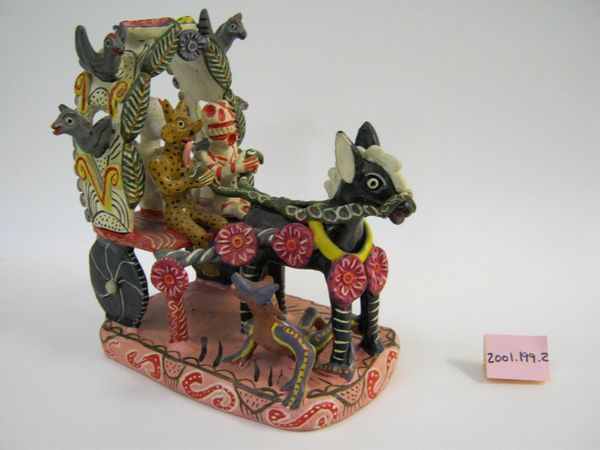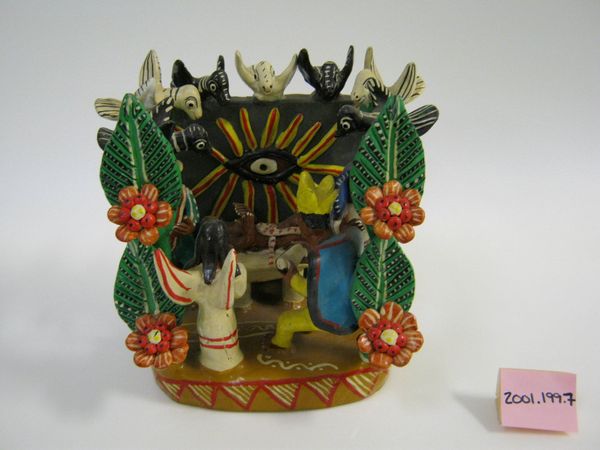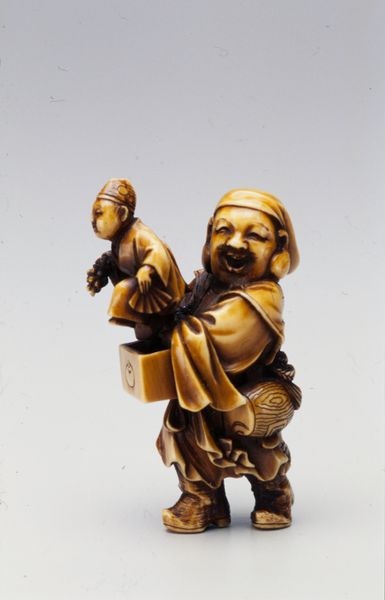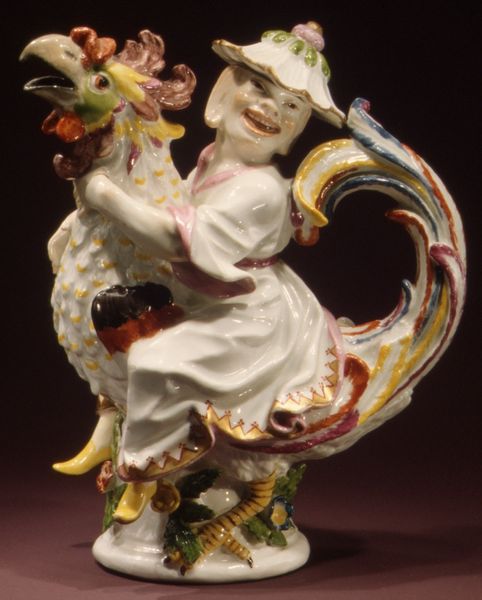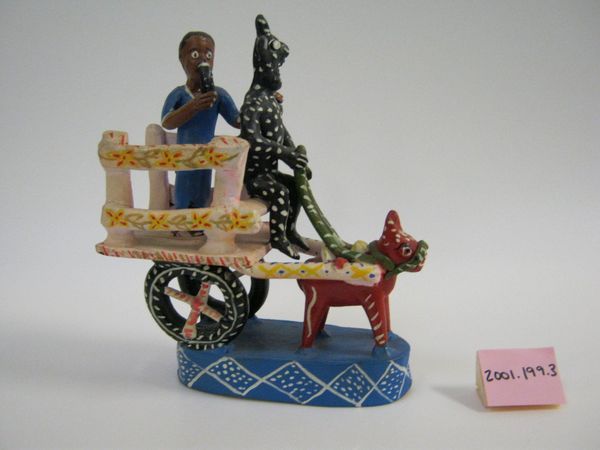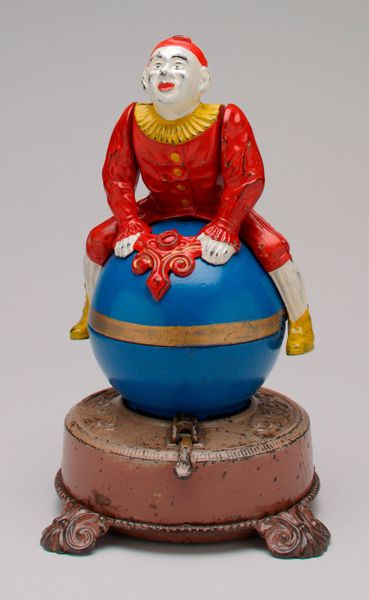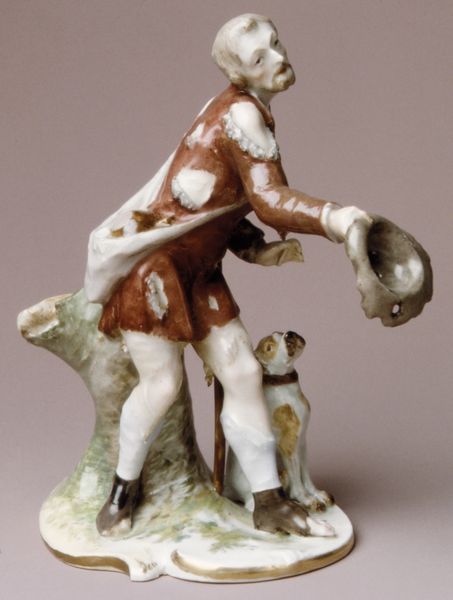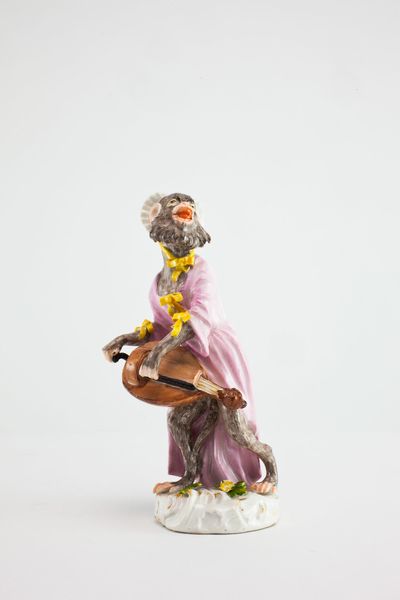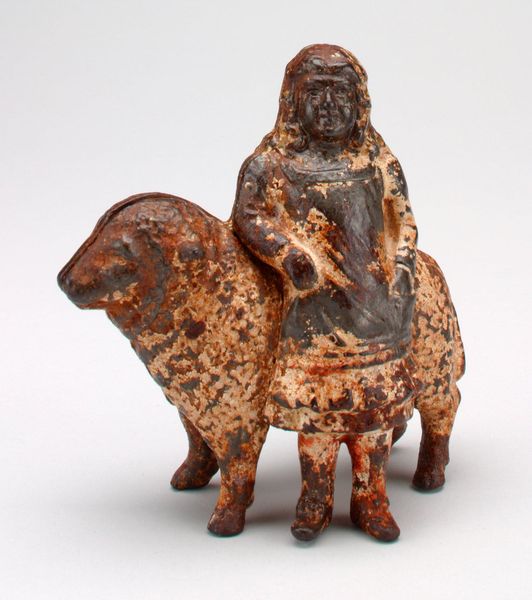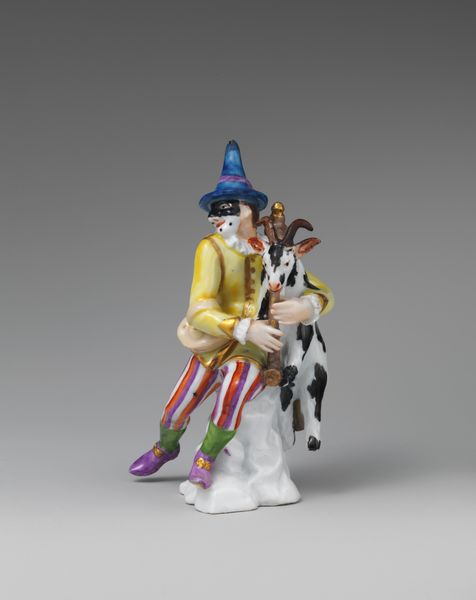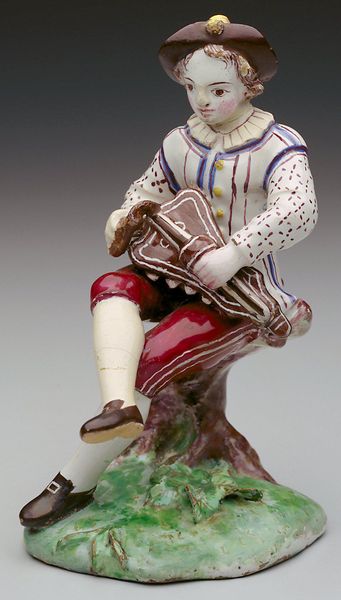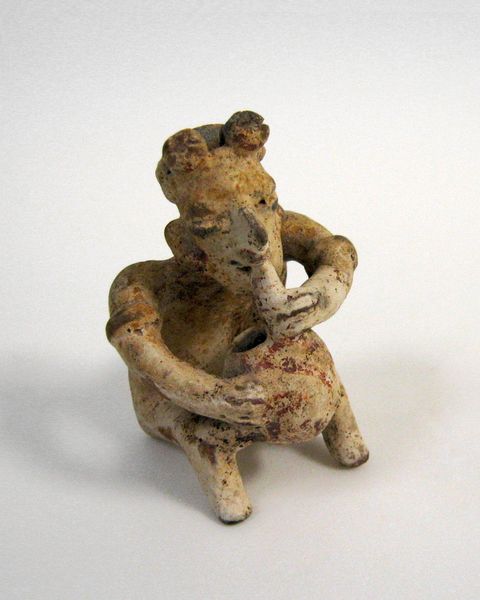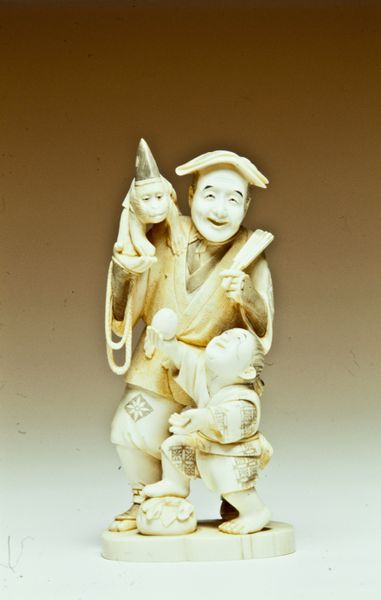
ceramic, sculpture
#
narrative-art
#
ceramic
#
figuration
#
sculpture
Dimensions: 11-1/8 x 7 x 6-1/2 in. (28.3 x 17.8 x 16.5 cm)
Copyright: Public Domain
Curator: Let’s turn our attention to "The Crucifixion," a ceramic sculpture, dating from the mid-20th century, residing here at the Minneapolis Institute of Art. Editor: It strikes me immediately with its rather...unsettling palette. There’s an almost primitive quality to the rendering of the figures and their relationships within the composition. It’s not necessarily beautiful in a conventional sense, but certainly commands attention. Curator: This piece offers a powerful lens through which we can consider the complexities of faith and cultural identity. The artist, remaining anonymous to us, chose to portray one of the most seminal stories in Western religious history, yet infuses it with a style suggestive of non-Western traditions. Editor: Yes, I noticed that as well! The elongated limbs, flattened perspective, and high-contrast colors seem intentionally divorced from any Renaissance sensibilities. And what to make of the base it's placed on, also? It anchors it materially to this earthen origin. Curator: Precisely. One could examine this through postcolonial theory. Whose narratives get centered? How are non-Western artistic traditions perceived and valued in relation to the canon? By depicting such a Western-centric motif with a more "primitive" design, the artist challenges our own ingrained ways of knowing about faith. Editor: From a formal perspective, this tension creates a compelling dissonance. There's a palpable energy in this seemingly naïve design choice; it’s in the very texture, a deliberate coarseness that amplifies its message and challenges my ideas around both aesthetics and theological interpretations. Curator: It becomes an intersectional dialogue then—the personal meeting the political, and the historical confronting the present moment. Editor: Ultimately, this ceramic sculpture makes me consider how faith is sculpted, formed, and colored, both literally and figuratively, by culture. Curator: It certainly does. The crucifix asks more from the audience when rendered in this raw, emotional presentation of form.
Comments
No comments
Be the first to comment and join the conversation on the ultimate creative platform.
